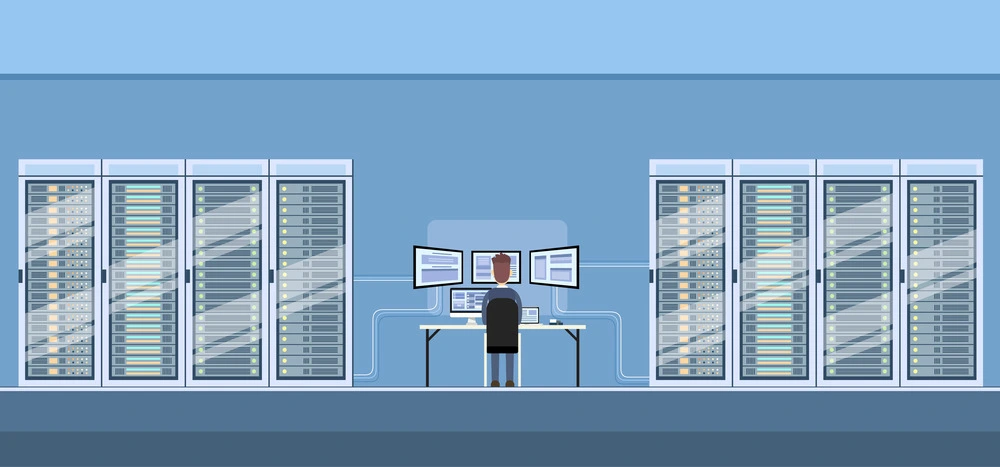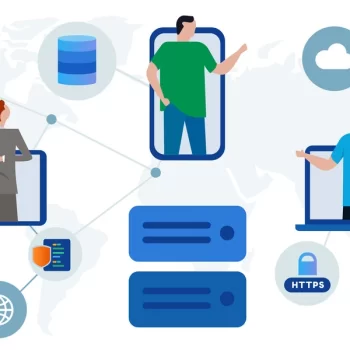VLANs (Virtual Local Area Networks) have long been essential in networking, allowing network segmentation to improve security, efficiency, and traffic management. Traditionally, VLANs helped organizations optimize their IT infrastructure by isolating devices within a network, reducing congestion, and enhancing security. Today, VLANs remain critical for maintaining stability and performance as networks grow more complex with cloud computing and remote work. Their role in securing data and streamlining communication makes them indispensable in modern IT. Companies like Infraon leverage VLANs to enhance network efficiency, ensuring seamless connectivity in today’s fast-evolving digital landscape.
Related blog: How to Streamline Telecom Network Management with GenAI
The Original Purpose of VLANs
VLANs (Virtual Local Area Networks) were created to segment traffic within networks, allowing network administrators to logically group devices without considering their physical location. This improves security, enhances performance, and simplifies network management. By isolating devices into separate VLANs, organizations can control which devices communicate with each other, reducing unnecessary traffic and improving efficiency.

Use Cases in Traditional Enterprise Environments
- Security – VLANs help protect sensitive data by restricting access to specific groups. For example, in an enterprise, HR systems can be placed in a separate VLAN from general employees, preventing unauthorized access.
- Performance Optimization – By managing broadcast traffic, VLANs reduce network congestion, ensuring that communication remains efficient. This is especially useful in large organizations where excessive traffic can slow down the entire system.
- Management – VLANs simplify network administration by grouping users logically, making it easier to apply policies, monitor performance, and troubleshoot issues.
With the rise of cloud networking and advanced networking technologies, VLANs play a crucial role. Comparisons like VLAN vs VXLAN show how modern networks are evolving, with VXLAN offering better scalability for larger, cloud-based infrastructures.
Challenges Facing VLANs Today
VLANs (Virtual Local Area Networks) have been a key part of IT infrastructure for years, helping businesses improve network segmentation and security. However, as networks grow more complex and businesses shift to cloud and hybrid environments, VLANs face new challenges that impact their effectiveness.
- Scalability Concerns in Large, Dynamic Networks
As organizations expand, managing VLANs across a growing network becomes difficult. A large number of VLANs can lead to increased administrative overhead, making it harder to maintain efficiency and performance.
- Integration Issues with Cloud and Hybrid Infrastructures
Traditional VLANs were designed for on-premise networks, but today’s businesses rely on cloud services. Integrating VLANs with cloud-based systems can be complex, requiring additional solutions to maintain seamless connectivity across different environments.
The Rise of SDN and Its Impact on VLAN Usage
Software-defined networking (SDN) is changing how networks operate, offering greater flexibility and automation. While VLANs are still used, SDN provides more advanced network segmentation techniques, reducing reliance on traditional VLANs.
Despite these challenges, VLANs remain a fundamental part of IT infrastructure. Businesses must adapt their strategies to ensure VLANs work efficiently in modern, cloud-driven networks.
With advancements in networking technologies, traditional VLANs are evolving to meet the demands of cloud networking and large-scale infrastructures. While VLANs remain crucial for VLAN security and traffic control, new technologies like SDN and VXLANs are changing the networking landscape.
Modern Networking Paradigms: Where VLANs Stand
Role of SDN, VXLANs, and Other Modern Technologies
Software-defined networking (SDN) introduces automation and centralized control, making network management more flexible. VXLAN (Virtual Extensible LAN) expands VLAN capabilities by allowing better scalability across large networks, particularly in cloud environments. These technologies work alongside VLANs to enhance performance.
VLANs vs VXLANs: Are VLANs Being Phased Out or Evolving?
The VLAN vs VXLAN debate continues as networks grow. VXLANs offer better scalability and support for cloud-based architectures, but VLANs still provide simple, effective networking technologies for smaller networks. Rather than disappearing, VLANs are adapting to work with VXLANs in modern setups.
Emerging Technologies and Trends in Network Segmentation
New trends like intent-based networking and AI-driven security are improving VLAN security and segmentation. As cloud networking expands, VLANs must integrate with hybrid infrastructures, ensuring secure and efficient communication. While networking evolves, VLANs remain a fundamental part of modern networks.
Advantages VLANs Still Offer
Despite advancements in cloud networking and modern IT infrastructure, VLANs continue to be a reliable solution for many businesses. They provide efficient network segmentation, improve security, and simplify network management. While larger enterprises may adopt newer technologies, VLANs remain essential, especially for small to medium-sized businesses.
- Simplicity for Small to Medium-Sized Businesses
VLANs are easy to set up and manage, making them ideal for companies that don’t require complex networking solutions. They allow businesses to segment their networks efficiently without needing advanced configurations.
- Cost-Effectiveness and Ease of Implementation
VLANs don’t require expensive hardware or software upgrades unlike more advanced solutions. They offer an affordable way to enhance network security and performance without adding significant costs.
- Compatibility with Legacy Systems
Many businesses still rely on older networking equipment. VLANs integrate smoothly with legacy systems, allowing organizations to upgrade their networks gradually without disrupting existing operations.
Companies like Infraon leverage VLANs to provide flexible and secure IT infrastructure solutions. While cloud-based networking grows, VLANs continue to play a critical role in network segmentation, ensuring businesses maintain efficiency and control over their networks.
Predictions for the Future
While SDN and cloud networking offer advanced features, they don’t entirely replace VLANs. Instead, VLANs continue to evolve, adapting to modern hybrid infrastructures. Businesses can combine VLANs with SDN and VXLANs for a balanced approach, ensuring security, performance, and cost efficiency. VLANs may not dominate the future, but they will remain a crucial component of network management for years to come.

Innovations in VLAN Technology That Keep It Competitive
As networks evolve, VLANs continue to adapt to new advancements that enhance network segmentation, flexibility, and scalability. Despite the rise of cloud networking and SDN, VLANs remain a crucial part of modern IT infrastructure.
- Inter-VLAN Routing – Enables communication between VLANs for better traffic control.
- Dynamic VLANs – Automatically assigns devices to VLANs based on authentication or device type.
- Port-Based VLANs – Allows specific switch ports to be assigned to VLANs for better access control.
- Voice VLANs – Prioritizes VoIP traffic for clear voice communication.
- VXLAN – Extends VLAN capabilities across large networks.
- Stackable Switches – Simplifies VLAN management across multiple switches.
- Cloud-Based VLAN Management – Centralizes VLAN control via cloud platforms.
Companies like Infraon leverage these innovations to ensure VLANs remain relevant and competitive in modern networking environments.
Related blog: How Real-Time Network Monitoring Can Solve Key IM Challenges
Conclusion
Despite the rise of SDN, VXLAN, and cloud networking, VLANs continue to be an essential part of IT infrastructure. Their ability to provide efficient network segmentation, security, and traffic control keeps them relevant, especially for small to medium-sized businesses. While modern technologies offer greater scalability, VLANs remain a cost-effective and reliable solution.
Companies like Infraon are helping businesses integrate VLANs with new networking technologies, ensuring they evolve alongside industry advancements. As networks grow, VLANs will continue to adapt, working alongside SDN and cloud solutions to provide secure and efficient networking for years to come.



















